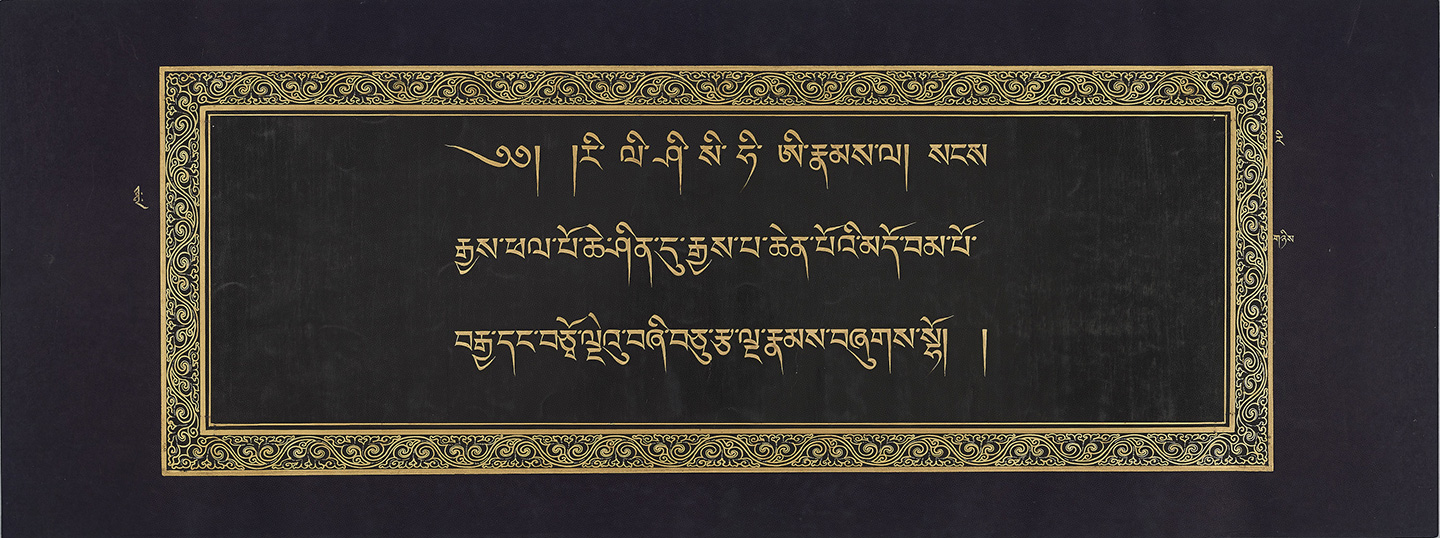The Tibetan Buddhist Canon is a collection of sacred Buddhist texts in Tibetan Buddhism. Considered as the Dharma Jewel, one of the Three Jewels of Buddhism, it is made up of the Kangyur and the Tengyur. The Kangyur, or "translated words," consists of teachings supposed to have been spoken by the Buddha himself, while the Tengyur, or "translated treatises," is a collection of writings and commentaries on the Buddhist teachings collected in the Kangyur. Thus, the Kangyur is also known as the "primary canon," and the Tengyur the "secondary canon." Throughout history, the transcription and printing of the Tibetan Buddhist Canon has mainly focused on the Kangyur, with the Kangxi Kangyur being one such example. The Kangxi Kangyur, a collection totaling 1,057 Buddhist classics, consists of the tantras of Vajrayāna and the sūtras of Sūtrayāna, and is divided into six sections: Tantra (Esoteric Teachings), Prajñāpāramitā (Perfection of Wisdom), Ratnakūṭa (Heaps of Jewels), Avataṃsaka (Flower Ornament), Sūtra (Miscellaneous Sūtras), and Vinaya (Monastic Discipline). The six sections are equivalent to the sūtra-piṭaka (collected sermons) and the vinaya-piṭaka (collected rules) of the Chinese Buddhist Canon.
Avataṃsaka
- Volume "Li" from the Avataṃsaka Section of the Kangxi Kangyur, handwritten in gold-inked Tibetan script, 8th year of the Kangxi reign, Qing dynasty
- Volume "I" from the Avataṃsaka Section of the Kangxi Kangyur, handwritten in gold-inked Tibetan script, 8th year of the Kangxi reign, Qing dynasty
This 6-volume section contains one category of classics. The full title of this section is the Dafangguangfo Huayenjing (Mahāvaipulya Buddhāvataṃsaka Sūtra), and the Tibetan translation was produced in the mid-8th century by Indian scholars Jinamitra and Surendrabodhi in collaboration with the Tibetan translator Ye shes sde (ye shes sde). The translation consists of 130 (or 115) juan (fascicles) in 45 chapters; the first 44 chapters are roughly equivalent to the first 38 chapters of the 80-volume Mahāvaipulya Buddhāvataṃsaka Sūtra in Chinese translation, and the 45th chapter is the Gaṇḍavyūha, which is the 39th chapter in the Chinese translation. However, the Tibetan version has two chapters that are not available in the Chinese version: "Ornament of Tathāgata's Ears" (Chapter 11) and "Discourses by Samantabhadra" (Chapter 32). The scripture mainly describes the achievements of Buddha Vairocana and all the incredible activities of the Bodhisattvas on various stages, together with their retinues, pure-lands, and the ornaments of the pure-lands; it also explicates the concepts of the dharma realm of phenomena, the dharma realm of principle, the non-obstruction between phenomena and principle, and the non-mutual exclusivity of phenomena.

